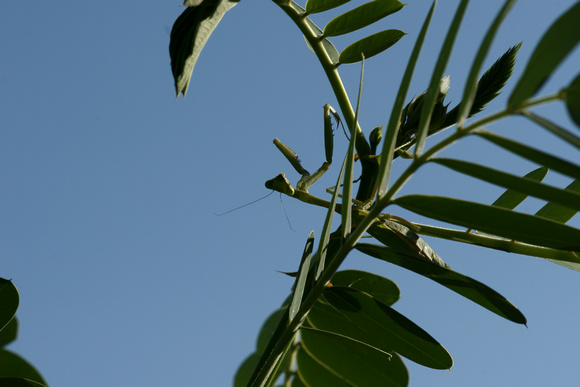|
|
Post by admin on Oct 4, 2014 12:00:00 GMT -8
I have been rearing these in my backyard from a Cassia tree I have planted. Having some successes and some failures. Three problems I have encountered: cannibalism amongst the young larvae, failure of the adults to emerge properly when the pupae are kept indoors, and difficulty to get live females to oviposit in a cage with the host plant. I would like to hear from you if you have experience rearing this species. Maybe we can share notes.
|
|
Deleted
Deleted Member
Posts: 0
|
Post by Deleted on Oct 5, 2014 14:31:47 GMT -8
I'm still trying to figure out why I haven't seen any yet. I always see them in the early fall
|
|
|
|
Post by admin on Oct 16, 2014 11:31:21 GMT -8
These butterflies lay their eggs in the very tender tips of the new growth leaves and on the flower buds of the Cassia tree. I have a Cassia tree in my backyard and I have been watching the activities of the sulphers on my tree. I am always amazed at how quickly the female butterfly deposits an egg on the leaf. A split second is all it takes! The fastest ovipositing for a butterfly I have ever seen. She does it so quick I can't even snap a picture of it. And then she rapidly flies off to the next leaf. Now I know why... I have discovered many praying mantids on my Cassia tree, waiting patiently by the sprouts of tender growth, sitting perfectly still. They've been there all along. They have a little community in my tree. They are waiting for a chance to catch the butterfly while she lays an egg. The butterfly, as a defense mechanism, has evolved to be very quick about this in order to avoid disaster. Notice in my pic that the mantis is perfectly camouflaged against the leaves. Those mantids have got it all figured out. Sometimes they hit, sometimes they miss. A balance in nature I suppose.  |
|
|
|
Post by admin on Oct 16, 2014 11:33:25 GMT -8
I'm still trying to figure out why I haven't seen any yet. I always see them in the early fall I'm seeing them all year around here in SoCal. Probably because there are a lot of Cassia trees in my area, not to mention a temperate climate. It helps. |
|
|
|
Post by wingedwishes on Nov 4, 2014 7:58:28 GMT -8
I experience heavy predation too but from wasps and birds. A squirrel even began eating them. The squirrel is no longer with us... For a time I used individual cups with snips from cassia to rear them separately. I used a screened porch rather than take them inside and risk drying from the AC.
|
|
|
|
Post by admin on Nov 4, 2014 9:18:02 GMT -8
I experience heavy predation too but from wasps and birds. A squirrel even began eating them. The squirrel is no longer with us... For a time I used individual cups with snips from cassia to rear them separately. I used a screened porch rather than take them inside and risk drying from the AC. Drying from the AC! I was suspecting that. I lost a lot of them that way. They could not emerge successfully from their pupa. Now I put them in a cage outside in the hot sunlight shining directly on them. I haven't lost any so far this way. |
|
|
|
Post by wingedwishes on Nov 4, 2014 15:33:52 GMT -8
I have several chrysalis mummies! I started misting them inside and that seemed to help a lot.
|
|
|
|
Post by admin on Nov 4, 2014 23:30:35 GMT -8
Mummies, indeed.
|
|